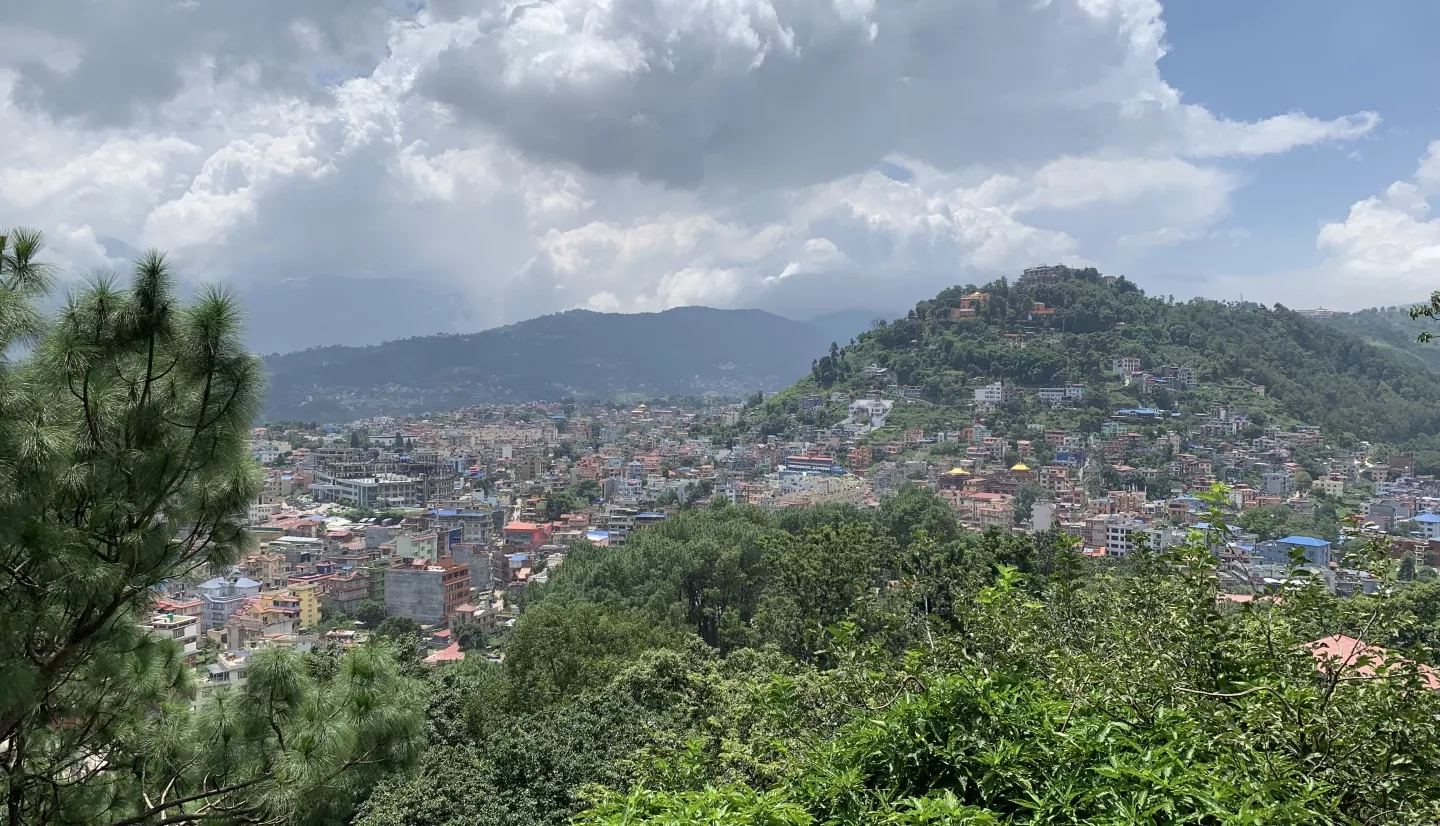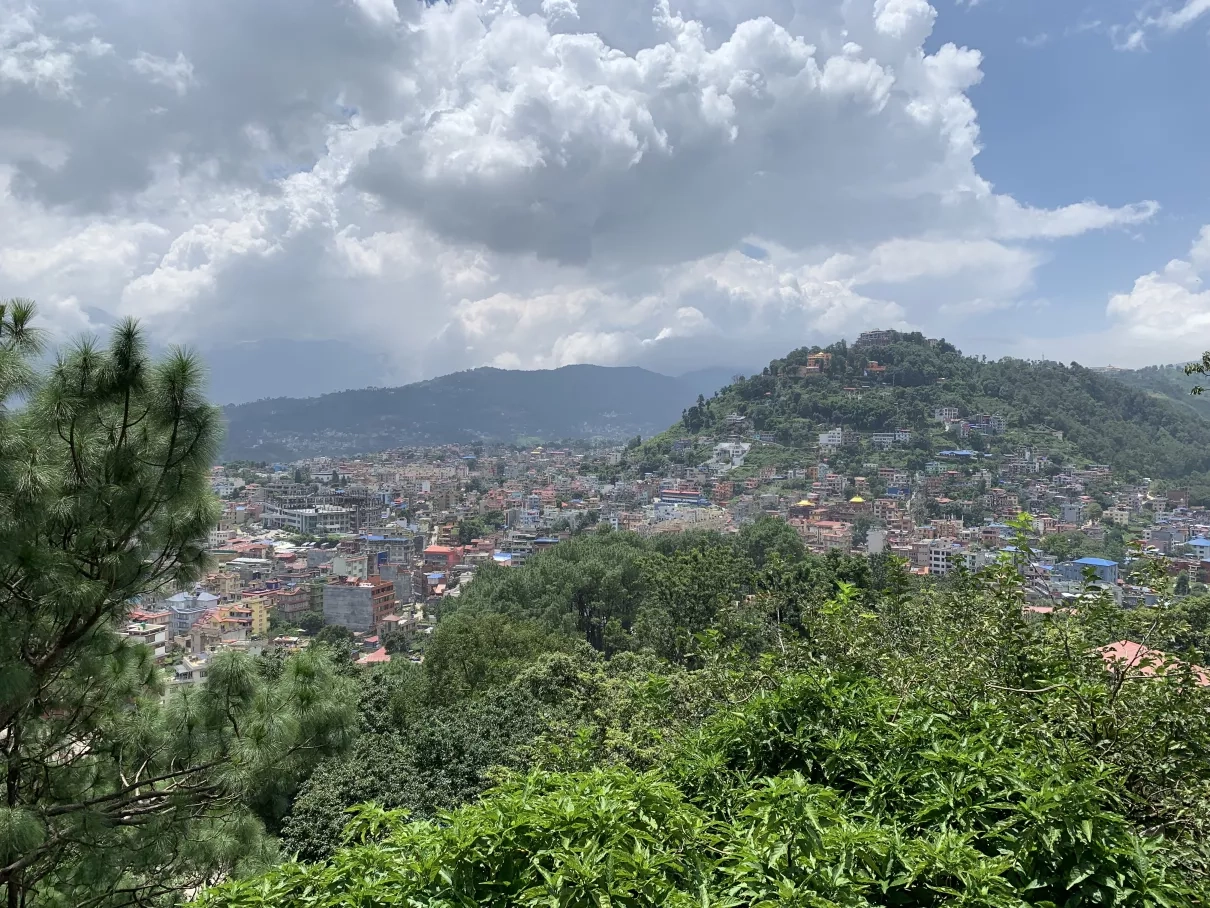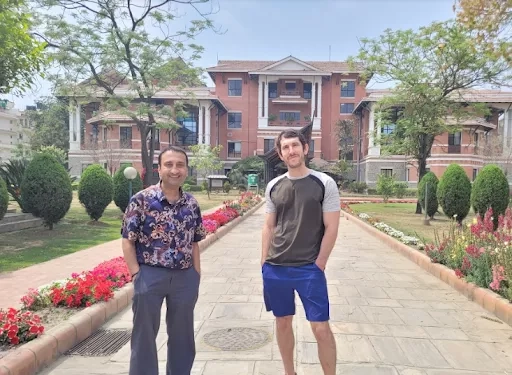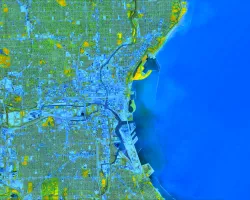In the Hindu Kush and Himalayan mountain ranges, the stunning landscape that makes the region so iconic is also creating a serious obstacle for public health–but NASA atmospheric scientists and the SERVIR program are working to help keep mountain communities breathing easy.
Steep-sided valleys and a ‘ceiling’ of cold, dense mountain air can trap smoke and pollution close to the ground, holding cities like Kathmandu, Nepal in pockets of dangerously poor air quality. The World Health Organization estimates that air pollution contributes to around 2 million deaths across South and Southeast Asia every year. SERVIR, a joint program of NASA and the U.S. Agency for International Development, works with the International Centre for Integrated Mountain Development (ICIMOD) to train personnel from these regions in air quality monitoring.
Two of the atmospheric scientists leading this charge are Marshall Space Flight Center’s Dr. Aaron Naeger and ICIMOD’s Dr. Bhupesh Adhikary.
Dr. Aaron Naeger is a research scientist who serves as the Deputy Program Applications Lead for NASA’s TEMPO (Tropospheric Emissions: Monitoring of POllution) mission, planned for launch in March 2023. As a principal investigator with SERVIR’s Applied Sciences Team, Naeger is using his expertise on air pollution and short-term weather forecasting to help strengthen communities’ pollution monitoring capabilities. Dr. Adhikary is ICIMOD’s Senior Air Quality Specialist and an expert in atmospheric chemistry with more than twenty years of experience studying air pollution around the world–especially South Asia. In addition to being a technical expert Dr. Adhikary is instrumental in working with scientists and policy makers to raise awareness on air pollution issues.
“One cannot control or mitigate any pollutant which cannot be monitored or measured,” Adhikary said. He notes that high-quality monitoring is important because it helps decision-makers be proactive in addressing the issue before conditions become dangerous. “Attention to the air pollution problem and its possible mitigation options are high on the political agenda only during severe pollution events and episodes. Tackling air pollution requires multidisciplinary understanding of the issue along with coordinated multi-sectoral mitigation measures.”
Naeger, Adhikary, and the rest of SERVIR’s Hindu Kush-Himalaya team have been building a suite of air quality products, including an air pollution forecast model that integrates data from instruments onboard low Earth and geostationary Earth orbit satellites resulting in improved spatial and temporal resolution of the forecast products. This includes data from the Advanced Meteorological Imager onboard the Geostationary Korean Multi-purpose Satellite (GEO-KOMPSAT). The high-resolution model provides residents with 54-hour air quality forecasts, giving them time to plan and react to extreme pollution events.
These models and products contribute to the existing air pollution work at ICIMOD through their Atmospheric Watch Initiative, which works with the Nepal Department of Environment to establish air quality monitoring stations around the country and inform policy. Naeger’s products have been integrated into the official Nepal Department of Environment Air Quality Watch dashboard making them accessible to policy makers and the public alike.
In addition to helping design air quality monitoring and forecasting tools, Naeger and Adhikary also provide workshops for government personnel in the region to expand their capabilities to monitor local air quality. In April, the team hosted a workshop that brought 10 professionals from Nepal and Bangladesh to ICIMOD and reached another 20 professionals from around the region virtually. Because air pollution is a transboundary issue, the team prioritized building a common understanding of air quality issues while getting perspectives from the entire region. Naeger helped participants learn to use web tools that model dust and aerosols, as well as trace gases–a component of pollution monitoring that Naeger says is often overlooked.
“Satellite data enables users to better monitor and track pollutants in the region and better attribute them to pollutant sources. Recent research has shown that trace gas pollution, particularly nitrogen dioxide (NO2), is very harmful to human health,” Naeger said. “While a lot of previous efforts have focused on particulate matter pollution, there has been less emphasis on monitoring and forecasting trace gasses and assessing their health impacts.”
Though using satellite data for pollution monitoring does have the advantages of being able to view the problem at a regional scale and pinpoint pollution sources, it takes time to introduce it into local decision-making.
“One challenge is simply having and building knowledge around satellite data in the region since it is a new topic area in terms of what it can do for air quality,” Naeger said.
With almost half the participants coming from government agencies, the training set the stage to incorporate these new air quality products into public systems where decision makers will have access to the satellite data. As these services gradually become part of decision making at agencies like Nepal’s Department of Environment, repeat use and feedback will allow Naeger and Adhikary’s teams to continue to improve them. Through this continued engagement with atmospheric scientists, communities in the region will have powerful new tools at their disposal to protect breathable air as the region continues to grow.





